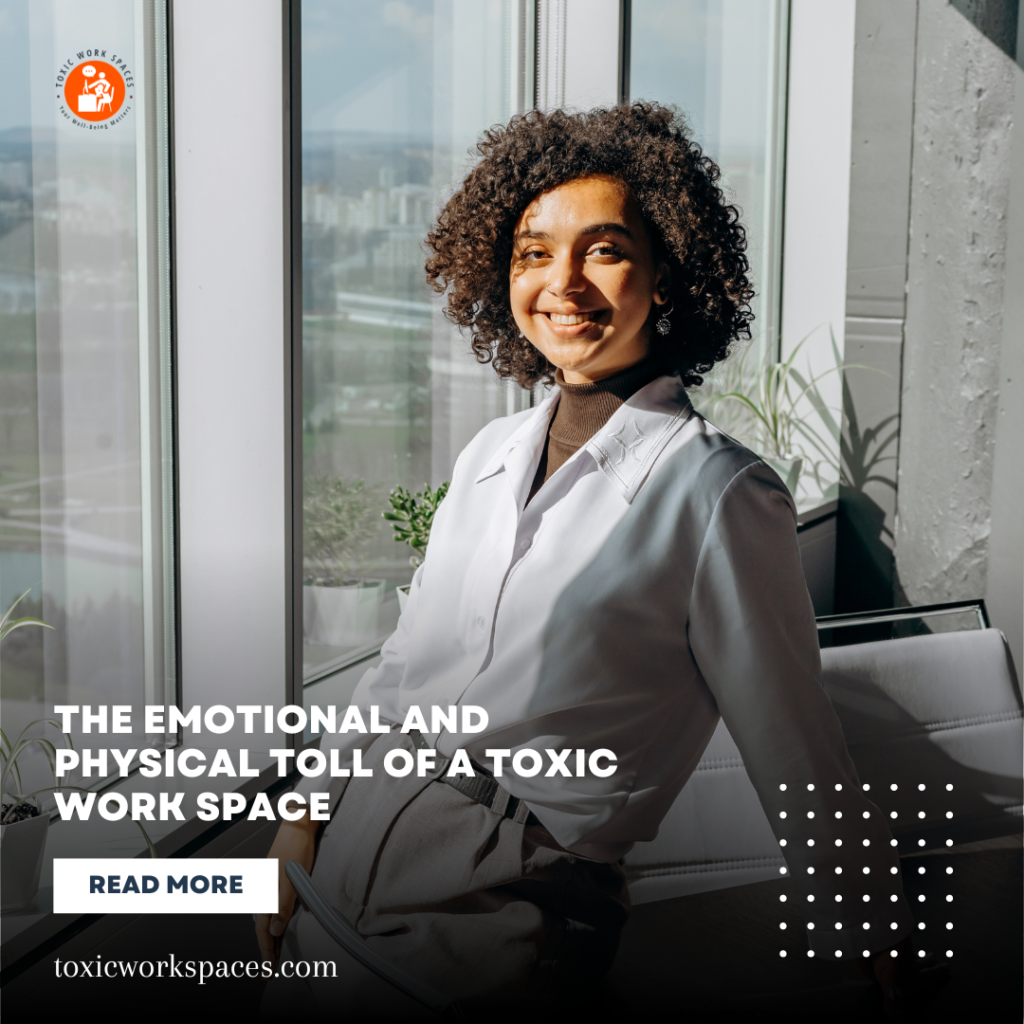Why So Many Professionals Don’t Realize They’re in Toxic Work Spaces
Despite the growing conversations around workplace wellness, many professionals still don’t realize they’re operating in survival mode. Toxicity in the workplace isn’t always loud or obvious. More often, it’s slick, cumulative, and internalized. It’s the kind that wears you down slowly through unrealistic expectations, ignored boundaries, exclusion, or the daily pressure to perform with no room to pause or question. Over time, we start to call it normal. We cope instead of challenge. We internalize what’s broken as a personal failure instead of recognizing it as a systemic issue. As the founder of Toxic Work Spaces, I’ve spent over six years working to name and unpack harmful work culture. But recently, I wanted to go deeper. I initiated one-on-one conversations with nearly ten leaders across different sectors, tech, healthcare, education, and nonprofit, to understand how toxicity is truly showing up in workplaces today. I found that regardless of industry, team size, or mission, the same underlying patterns were there. It was clear that people were exposed to toxic work spaces in ways they couldn’t always see, name, or escape. These conversations led me to create a new framework I call Toxicity Exposure Mapping. Toxicity Exposure Mapping helps professionals and organizations understand the often invisible, layered ways in which toxicity shows up and how it affects people mentally, emotionally, and even physically. From this brief research, I identified four major exposure zones that many people unknowingly operate within. The first group I call The Silent Normalizers. These are professionals who’ve become so accustomed to dysfunctional systems like excessive workloads, unending meetings, or toxic praise for burnout—that they no longer question it. They say things like, “That’s just how this industry is,” without realizing how much it’s costing them in health and well-being. Then there are The Invisible Strugglers, individuals who are deeply affected by subtle forms of toxicity such as gaslighting, exclusion, or poor leadership, but can’t quite put their finger on what’s wrong. They internalize the pain, believing they are the problem, which only adds to the damage. Another group, The Boundary Burnouts, are often high performers whose time and emotional labor are constantly stretched. They’re the ones always picking up the slack, staying late, or managing toxic team dynamics without recognition or support. Over time, they begin to break down, but often stay because their role is tied to their identity. Lastly, there are The Well-being Disconnected teams or organizations that outwardly promote wellness (through perks like meditation apps or “wellness days”) but fail to address the structural issues that make those initiatives ineffective. These are the places where people are told to take care of themselves, while no one is addressing the reasons they’re burning out. The key takeaway from this work is that awareness is not enough and naming these experiences gives power back to the people living through them. When we understand how we’re being affected, we can start to set boundaries, seek support, or initiate change. But we also need to stop placing the full burden on individuals to “be more resilient.” Healing requires systemic shifts. Organizations must be willing to examine and redesign the very structures that allow toxic patterns to thrive. If you recognize yourself in any of these descriptions, you’re not alone and you’re not imagining it. Whether you’re quietly struggling or have been pushing through for years, you deserve to work in an environment that supports your well-being, not undermines it. That’s why I’m continuing to build tools like the Toxicity Exposure Checklist and HR Maturity Assessment to help both individuals and organizations take informed action. I believe we can move beyond survival. But it starts by naming the problem, mapping the exposure, and demanding better. If you’d like access to these tools or to explore what this could look like in your workplace, I’d love to hear from you. Email me at shi@toxicworkspaces.com
Why So Many Professionals Don’t Realize They’re in Toxic Work Spaces Read More »










